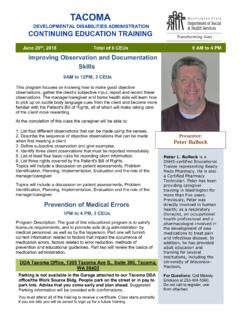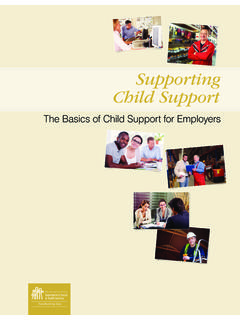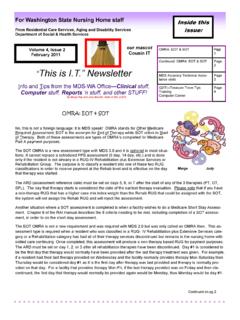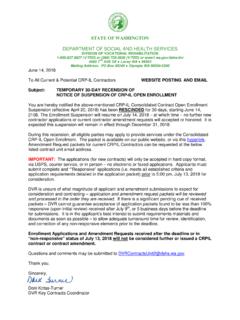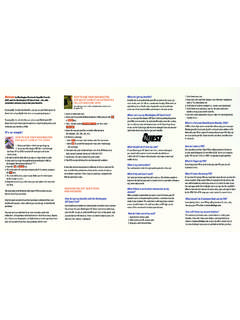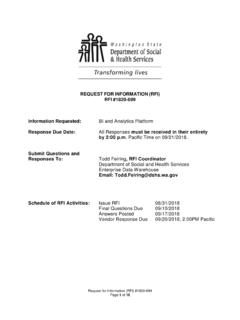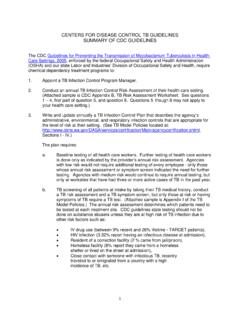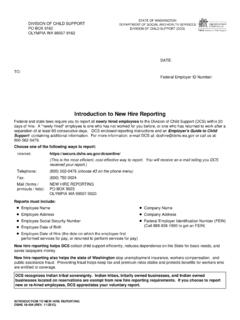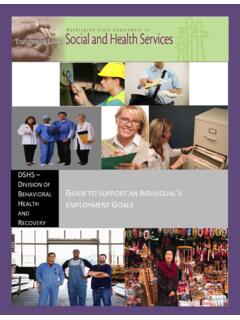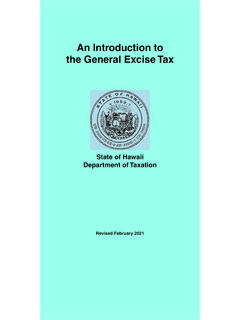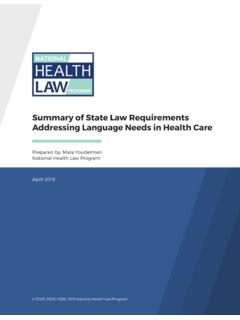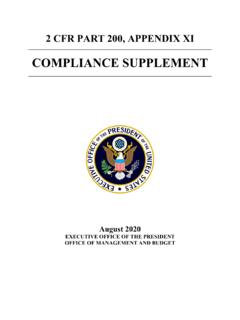Transcription of INSTRUCTIONS FOR THE CHILD SUPPORT GUIDELINES …
1 INSTRUCTIONS FOR THE. CHILD SUPPORT GUIDELINES WORKSHEET. AND. THE SIMPLIFIED CHILD SUPPORT GUIDELINES WORKSHEET. I. INTRODUCTION. State law requires the Family Court, the CHILD SUPPORT Enforcement Agency and the Office of CHILD SUPPORT Hearings to follow these GUIDELINES in all cases involving CHILD SUPPORT unless there are exceptional circumstances.. These GUIDELINES provide for calculating CHILD SUPPORT by either: A) The Simplified CHILD SUPPORT GUIDELINES Worksheet using the Simplified CHILD SUPPORT Calculation Table (Attachment A)(see page 4); or, B) The CHILD SUPPORT GUIDELINES Worksheet using the Income Table (Attachment B)(see page 5). A number of general provisions apply to both formats and should be reviewed prior to completing your CHILD SUPPORT GUIDELINES . YOU MUST DETERMINE WHICH WORKSHEET APPLIES TO YOUR CASE.
2 IF THE PARENTS DO NOT AGREE WHICH WORKSHEET FORMAT APPLIES OR. DISAGREE AS TO THE AMOUNT OF CHILD SUPPORT , THE JUDGE OR HEARINGS. OFFICER WILL DETERMINE WHICH WORKSHEET FORMAT WILL APPLY AND THE. CORRECT AMOUNT OF CHILD SUPPORT . THERE MAY BE ADDITIONAL BENEFITS AVAILABLE TO YOU AND YOUR CHILDREN. IN THE FORM OF INCOME TAX CREDITS, CHILD CARE CREDITS AND EDUCATIONAL. TAX BENEFITS. WE RECOMMEND YOU CONTACT THE FOR THEIR PAMPHLETS. ON THESE TOPICS OR TALK WITH YOUR TAX PREPARER FOR AN EXPLANATION OF. THESE BENEFITS AND CREDITS. II. GENERAL PROVISIONS. A. PARENT, as used in these GUIDELINES means any person with a legal obligation of SUPPORT to a dependant CHILD (ren) and/or adult CHILD (ren). B. NUMBER OF CHILDREN means the number of children of the parties for whom CHILD SUPPORT is being calculated in this case or hearing.
3 C. ALL INFORMATION presented to the Family Court, the CHILD SUPPORT Enforcement Agency or the Office of CHILD SUPPORT Hearings shall be based upon MONTHLY. AMOUNTS. Where a parent receives weekly income, multiply the weekly amount by 52 and divide by 12 months to arrive at a correct monthly amount. Where a parent receives income twice a month (such as on the 1st and 15th of the month) multiply the semimonthly amount by 2 to arrive at a correct monthly amount. Where a party receives income every two weeks (such as every other Friday) multiply the biweekly amount by 26 pay periods per year and divide by 12 months to arrive at a correct monthly amount. CHILD SUPPORT GUIDELINES , November 1, 1998. INSTRUCTIONS , page 1. D. GROSS INCOME, as used in these GUIDELINES , worksheets and income tables, includes income from all sources that are regular and consistent, including but not limited to: 1.
4 Employment salaries and wages, including tips, commissions, bonuses, profit sharing, deferred compensation, and severance pay;. 2. Income from overtime and second jobs that occur on a regular basis;. 3. Spousal SUPPORT ;. 4. Investment and interest income (including dividends);. 5. Pension income;. 6. Trust or estate income;. 7. Annuities;. 8. Capital gains, unless nonrecurring;. 9. Social security benefits received by the party;. 10. Veteran's benefits, Military benefits (BAQ, BAS, VHA, BAF, etc.) and COLA;. 11. National guard and reserve drill pay;. 12. Benefits received in place of earned income, including workers' compensation benefits, unemployment insurance benefits, strike pay, and disability insurance benefits;. 13. Monetary gifts, lottery and gambling winnings that are continuous.
5 14. Income from contractual agreements;. 15. Income from self-employment, including rent, royalties, and other benefits allocated to an individual for a business or undertaking in the form of a proprietorship, partnership, joint venture, close corporation, agency, or independent contractor (see Paragraph E below); and 16. Fringe benefits, including use of company car, free housing, and reimbursed expenses which reduce personal living expenses. INCOME DOES NOT INCLUDE any benefits received from a needs-based public assistance program, including but not limited to Temporary Assistance to Needy Families (TANF), Supple- mental Security Income (SSI), Food Stamps, Section 8 Housing Allowances, General Assistance Grants, Pell Grants, and benefits received from the Jobs Training Partnership Act or WIC.
6 ASSETS FOR PAYMENT OF SUPPORT may be applied when a parent has inadequate income to meet his/her CHILD SUPPORT obligation. If the parent owns assets, he/she may be required to convert all or some portion of said assets to cash for payment of SUPPORT . Cleveland vs. Cleveland, 1 Haw. App. 7 (1980). E. SELF-EMPLOYED individuals must report gross income minus ordinary and necessary business/operating expenses, including a reasonable amount for ordinary wear and tear of capital assets and minus one-half of self-employment taxes (refer to tax returns). The court or administrative hearing officer will determine what (if any). depreciation1 may be subtracted. 1. Depreciation and/or amortization allowed or allowable under the Internal Revenue Code of 1986 as amended will generally exceed a reasonable amount for ordinary wear and tear.
7 Such adjustments should not be made for minor levels of depreciation or amortization. If any method other than straight line depreciation over the estimated useful life of a capital asset is used, then a suggested estimate of economic depreciation may be found in the Class Life Asset Depreciation Range System (ADR) generated by the Internal Revenue Service. CHILD SUPPORT GUIDELINES , November 1, 1998. INSTRUCTIONS , page 2. The Income Table reduces gross income to net income by subtracting state and federal taxes for filing single claiming one exemption, Social Security (FICA) at , and $633 (poverty income). The self-employed individual pays an additional self-employment tax which is nearly equal to the FICA usually contributed by the employer. For self-employed individuals with income under $10,150 per month, use the table for net income and then subtract of the self-employment tax (from tax returns) which is not reflected in the income table.
8 For self-employed individuals earning more than $10,150 per month, see page 12. F. IMPUTED INCOME may be used when a parent is not employed full-time or is employed below full earning capacity. The reasons for this limitation must be considered. If a parent's income is limited in order to care for the CHILD (ren) to whom the parties owe a joint legal responsibility, at least one of whom is younger than 3 years old, then no additional income will be imputed to that parent. If a parent's income is limited for any other reason, the parent's income will be determined according to his or her income capacity in the local job market, considering both the reasonable needs of the CHILD (ren) and the reasonable work aspirations of the parent. If any custodial parent (with a CHILD more than 3 years old) who is mentally and physically able to work, remains at home and does not work, no less than thirty (30) hours of weekly earning at the minimum wage may be imputed to that parent's income.
9 HRS Section 576D-7(a)(9), Cleveland vs. Cleveland, 1 Haw. App. 187 (1980); Saromines vs. Saromines, 3 Haw. App. 20. (1982). G. EXCEPTIONAL CIRCUMSTANCES presented to the Court or Hearings Officer may warrant a departure from the GUIDELINES ' computation. If you believe exceptional circumstances apply to your case, complete the Exceptional Circumstance Declaration form (Attachment D) and attach it to your guideline worksheet. For a discussion of exceptional circumstances see page 10. H. MINIMUM CHILD SUPPORT is $50 per month per CHILD . I. CHILD SUPPORT WILL BE DIVIDED EQUALLY PER CHILD . For example CHILD SUPPORT for 3 children is $300 per month. The award of CHILD SUPPORT is $100 per month per CHILD for a total of $300. CHILD SUPPORT GUIDELINES , November 1, 1998. INSTRUCTIONS , page 3. III.
10 CHILD SUPPORT GUIDELINES WORKSHEETS. A. SIMPLIFIED CHILD SUPPORT GUIDELINES as determined by the Simplified CHILD SUPPORT Calculation Table (Attachment A-1 & A-2). If all five of these provisions below apply to your case, then you MAY use the Simplified CHILD SUPPORT GUIDELINES Worksheet (Attachment A-1). 1. The Custodial Parent is caring for at least one of the parties' children under the age of three years in the home and not in day care; and 2. The Custodial Parent's only income is from needs-based public assistance such as welfare, TANF, general assistance, food stamps, SSI, Section 8 Housing, WIC and/or Pell Grant; and 3. The Custodial Parent is not working and/or employed; and 4. The Non-Custodial Parent who is responsible for the CHILD SUPPORT payments has a total gross monthly income of not more than $1450 per month; and 5.

